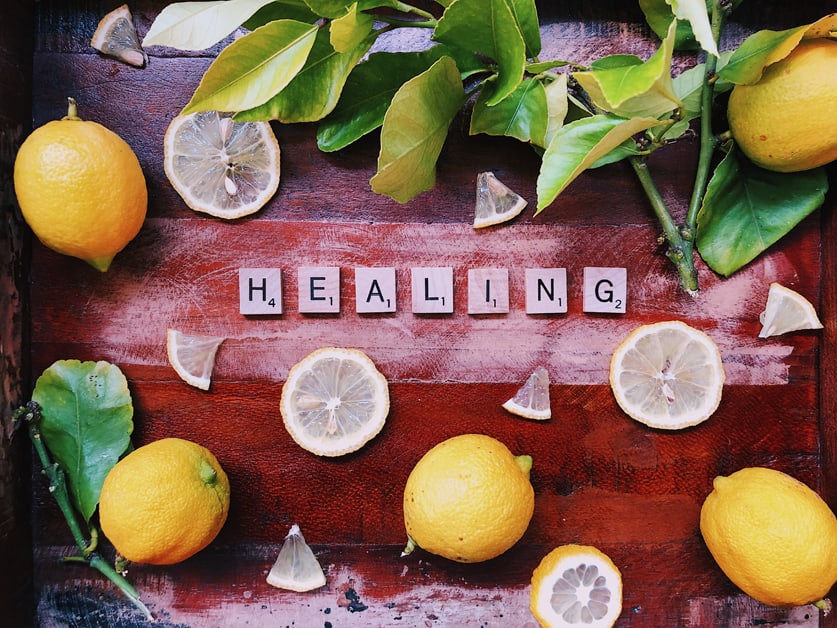Overview of Knee Injury Pain
Knee injury pain is a widespread issue. It can vary from minor to serious. It can be due to too much use, aging, a medical issue, or an injury. Knowing what causes your knee injury pain is important to finding the right treatment.
In this article, we will discuss how your diet can help to fix it and lessen the pain.
Causes of Knee Injury Pain
Knee injuries can be a real pain, making it hard to move or do everyday activities. They can be caused by many different things, such as:
- Traumatic Injury: Falls or other events lead to ACL tears, meniscus tears, fractures or dislocation.
- Osteoarthritis: This joint disease, also called “wear-and-tear” arthritis, affects middle-aged and elderly people. Cartilage damage causes joint inflammation and pain when walking and moving.
- Rheumatoid Arthritis: This chronic autoimmune disorder causes inflammation from the immune system attacking healthy joints. It may affect the knees, causing pain, inflammation and swelling.
- Bursitis: This irritation or inflammation of one or more bursae sacs can cause knee discomfort while walking.
Symptoms of Knee Injury Pain
Knee injury pain is a common issue, for athletes and non-athletes alike. It can range from minor discomfort to intense pain. This limits movement, especially when bending the knee or climbing stairs.
Common symptoms of knee injury pain include:
- Sharp or dull pain around the knee joint
- Swelling of the knee joint
- Stiffness with low range of motion
- Popping sensation while walking, running, or squatting
- Weakness in the knees and difficulty bearing weight.
If fever, chills, rash, or swelling beyond the joint area are present, it could be a sign of something more serious and medical attention is required.
Nutrition for Healing
Consuming the correct foods is essential for advancing healing and cutting down knee injury pain. Eating various healthy, nutrient-dense foods can aid you to maximize the healing process. Furthermore, it is vital to comprehend which foods can reduce inflammation and give the body the nutrients it needs for healing.
In this article, we will cover the top foods to eat for healing and reducing knee injury pain:
Foods to Avoid
Certain foods and substances can be bad for reducing pain and promoting healing. These include: unhealthy fats, processed/refined carbs, fried foods, caffeine, and alcohol.
- Unhealthy fats include trans fat from processed snacks and packaged baked goods. Also, saturated fats from red meat, full fat dairy products, butter, lard, and coconut oil. Plus, too much Omega-6 without enough Omega-3 fatty acids.
- Processed/refined carbohydrates are white flour or sugar. Examples are white breads, pastries, pizza dough, and pretzels. Eating these can lead to inflammation and pain.
- Fried foods have trans-fats and salt. This may dehydrate the body and cause joint pains.
- Caffeine from coffee or tea can cause dehydration. This could lead to increased knee pain or joint damage.
- Alcohol also causes dehydration. To reduce knee injury pain, it should only be consumed occasionally. Or better yet, replace with non-alcoholic beverages.
Foods to Include
The foods you consume are important for promoting healing and reducing pain. Variety is key when it comes to nutrient-dense, natural foods for proper tissue and bone healing and reducing inflammation. Eve Glicksman, M.D., an orthopedic surgeon at Massachusetts General Hospital, recommends the following when recovering from knee injuries:
- Fruits: Fruits contain antioxidants like vitamin C, which helps reduce inflammation and promote healing. Plus, they provide potassium which keeps joints healthy. Citrus fruits like lemons, grapefruits and limes, are especially great due to their vitamin C content and ability to regulate fluid levels.
- Veggies: Vegetables offer minerals like calcium, which builds strong bones and connective tissue. Leafy green veggies such as spinach, kale and chard are especially beneficial due to their iron, magnesium and other nutrients.
- Omega-3s: Omega-3 fatty acids have anti-inflammatory properties, reducing swelling and joint pain. Foods containing omega-3s include cold water fish, flaxseeds, walnuts, chia seeds, eggs, soybeans, grass fed beef, avocados, apples or papayas, spinach, collard greens, cashews, brazil nuts, almonds, and a quality omega 3 fish oil supplement.
- Healthy Fats: Healthy fats like olive oil repair cells, including joints affected by injury. They also provide energy for tissues recuperating and boost immunity. Other sources include avocado oil, coconut oil, butter or ghee made from grass fed cows milk etc.
- Proteins: Lean sources of protein (fish, poultry & legumes) provide essential amino acids for natural production of cartilage. This strengthens the connective tissues around an injury, preventing further damage and aiding in quicker rehabilitation. Proteins also help muscle movement around areas with swelling.
Supplements for Healing
Knee injury? What you eat matters! Supplements can be helpful for knee injury pain. Let’s explore these supplements. They can help with healing and ease the hurt.
Vitamins and Minerals
Vitamins and minerals are essential for a balanced diet. They may reduce knee pain and promote healing. Vitamin A, C, and E are powerful antioxidants. They protect against inflammation. Find them in salmon, orange juice, eggs, spinach, almonds and sweet potatoes.
Minerals like calcium and iron support healthy muscles. Manganese helps form collagen for bones and cartilage. Vitamin D3 keeps bones strong.
Supplements can help with individual needs. Glucosamine sulfate can lubricate joints. Chondroitin sulfate rebuilds collagen. Omega-3 fatty acids reduce inflammation and knee pain. Magnesium relaxes muscles around the knees. This is useful for people who have had surgery or accidents.
Herbs and Spices
Herbs and spices are great sources of important vitamins and minerals. They aid healing and reduce pain. Popular herbs, like turmeric, ginger, garlic, oregano, basil and thyme, are full of antioxidants and anti-inflammatory properties. This helps reduce swelling and soreness after physical activity or injury.
Turmeric has high content of curcumin, which reduces joint pain caused by rheumatoid arthritis or osteoporosis. Oregano is packed with vitamin K, which keeps bones strong and decreases risk of injury. Ginger’s anti-inflammatory properties may reduce arthritis pain and nausea from medications. Garlic lowers cholesterol levels and fights bacteria that can cause infection. Basil acts as an antioxidant and helps heal damaged tissues. Thyme has thymol, which can open up airways, reducing respiratory issues.
Herbs and spices add flavor to meals and have many other benefits. These include boosting recovery processes in the body, enhancing immunity, reducing inflammation, pushing back against tissue damage from physical activity or injury, increasing brain function, improving heart health, strengthening bones, aiding quicker wound recovery, assisting hormone production, and decreasing blood sugar levels.
Exercise for Healing
Exercise is essential for healing and reducing knee pain. Working out regularly builds stronger muscles close to the knee, which lessens stress on the joint. Doing exercises can also enhance your mobility and reduce the chance of future injury.
Let’s look at the workouts you can do to foster healing and ease knee pain:
Low-Impact Exercises
Low-impact exercises involve minimal jumping and pounding of the body and require no or little force on the joints. This type of exercise is an ideal way to heal muscle strain or injury, as it doesn’t cause more strain. Activities like swimming, biking, yoga, walking, tai chi and Pilates are all low-impact exercises.
- Swimming needs just a swimsuit and access to a pool or lake. It’s one of the best forms of exercise, as all muscles in your body feel its effects. Swimming is even suggested for people with back pain, as it helps them find balance, posture and stretch in the spine area.
- Cycling is another low-impact activity, great for those recovering from lower back pain. It puts little stress on the lower vertebrae, unlike running or jogging, which can be hard on hips and knees. A comfortable bike ride outdoors can help loosen tight muscles, whilst letting you breathe fresh air.
- Yoga also builds strength, increases flexibility and balance – all perfect qualities for someone trying to reduce pain from stiff muscles/joints. Postures such as downward dog, triangle pose, cobra pose and warrior pose can all help strengthen core muscles, essential for daily posture health, and the breathing techniques taught in yoga can relax tense muscles, leading to full health again.
Each person’s exercise needs are different, so it’s best to get advice from a qualified medical professional, to decide which low-impact activities are right for you.
Stretches and Strengthening Exercises
Stretching and strengthening exercises are important for physical healing. Stretches can reduce tension in muscles and relieve pain. They can also help with flexibility, stress relief and circulation. Listen to your body and don’t do anything that causes pain. Strengthening exercises build strength in weakened muscles and support joints that are limited due to injury or disease. Working on core strength helps with posture and decreases chances of further injury. Get guidance from a healthcare professional or certified trainer when doing strengthening exercises. Start slowly and increase intensity as you build up.
In summary, stretching and strengthening exercises help with:
- Pain
- Range of motion
- Discomfort due to injuries
- Core strength
- Chronic back problems
- Balance
- Immunity
- Releasing energy stored in sore muscles
These are essential for recovery from injury, disease or surgery.
Other Strategies for Healing
Eating food can aid healing and lessen pain. However, there are other strategies too!
- Physical therapy and exercise can improve knee strength and stability.
- Lifestyle changes, such as reducing stress, hydrating, and sleeping more, can help with the healing too.
This article talks about the different strategies to boost healing and reduce knee pain.
Rest and Relaxation
Rest and relaxation are key to creating and sustaining health, both physically and emotionally. Studies prove that regular rest and relaxation aid overall health, reduce stress, sharpen concentration, boost physical abilities, and boost self-esteem. Recharging the mind helps focus on important tasks and goals.
Sleep is essential for mental and physical health. Sleep repairs damage from the day. Cells regenerate new tissues for proper functioning. Sleeping 7-9 hours each night reduces stress, increases concentration, and prevents illnesses.
Resting does not have to mean sleep; it can be meditation, yoga, physical activities like biking or walking, hot baths, or spending time with people who make you feel good. The point of these activities is to reduce tension and increase joy.
Physical Therapy
Physical therapy is essential for recovery. It helps patients regain their strength, motion, and energy, so they can reach their pre-injury activity level. Therapists create individual plans with stretching, strengthening exercises, and massage. They also use modalities such as ultrasound, electrical stimulation, and heat or cold therapy.
Physical therapy can be used alongside medical treatments – like medication or surgery – to ensure the best outcome for the patient. It can also reduce pain levels to make activities like standing or walking easier. Plus, therapists often suggest lifestyle changes like proper nutrition and exercise.
In some cases, physical therapy is beneficial for psychological healing too. Therapists give advice on relaxation techniques and strategies to help manage psychological distress caused by physical pain or injury. Exercise is known to release endorphins which positively affects one’s mood.
Alternative Therapies
Alternative treatments are trending with people searching for relief from knee pain. Still, talk to a doctor before trying them. Here are some options:
- Acupuncture: This is a holistic approach that uses needles at certain points on the body to release energy and enable natural healing. It can be alone or with other treatments like physical therapy.
- Chiropractic Treatment: A chiropractor uses techniques to increase joint mobility, reduce pain and inflammation, and boost flexibility.
- Massage Therapy: Massage helps improve circulation. It could be combined with heat or cold applications to ease pain caused by injuries.
- Herbal Remedies: Some herbs can help reduce inflammation. But get a doctor’s approval first.
- Mind-Body Techniques: Yoga, tai chi, and meditation can help with both physical and mental well-being. They may even reduce acute and chronic knee pain.
Frequently Asked Questions
Question 1: What are some good foods to eat to help with knee injury pain?
Answer 1: Eating foods that are rich in omega-3 fatty acids, such as fatty fish, flax seeds, and walnuts, can help reduce inflammation and pain from knee injuries. Additionally, increasing your intake of antioxidant-rich foods such as fruits and vegetables can help promote healing.
Question 2: Are there any supplements I should take to help with knee pain?
Answer 2: It can be beneficial to take supplements such as glucosamine and chondroitin, which are known to help with knee pain. Additionally, omega-3 supplements can help reduce inflammation.
Question 3: What foods should I avoid if I have a knee injury?
Answer 3: You should avoid foods that are processed, high in sugar, or high in unhealthy fats, as these can increase inflammation and slow down the healing process. Additionally, it is best to avoid alcohol, as this can make knee pain worse.





